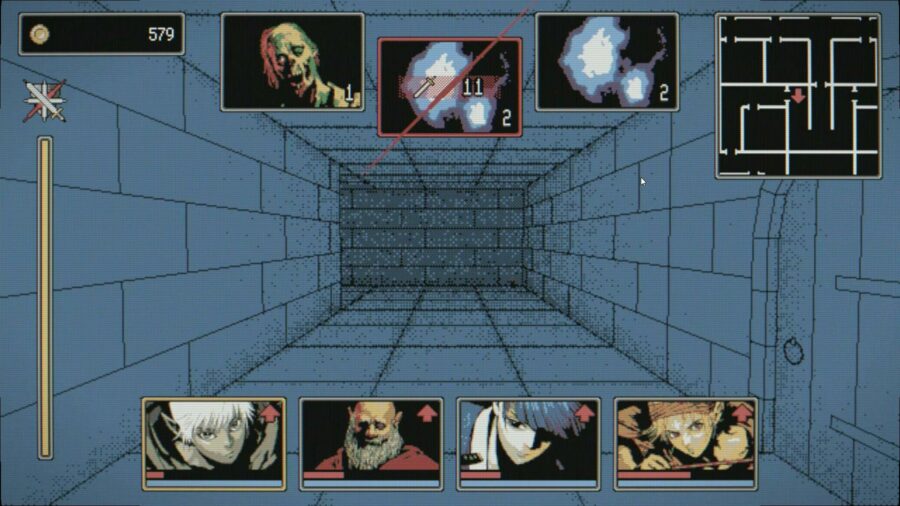Last week’s column reminded me that I’d been meaning to play Dragon Ruins II. It’s been out for a few months now, but I liked the first one enough that I wanted to see what the developers had done with the second.
It turned out that I got exactly what I wanted. DR2 is only slightly more complex than the original game, and most of it’s in the service of adding more to do. It’s also a little more difficult, but if you’re in the market for a throwback game like this in the first place, that’s probably not an issue.
Like the first game, DR2 is a minimalist spin on early first-person dungeon crawlers. Most of the attendant stat-juggling and resource management has been automated or firmly shoved under the hood, including combat. Your job is to explore dungeons, collect gold, and gradually upgrade your team.
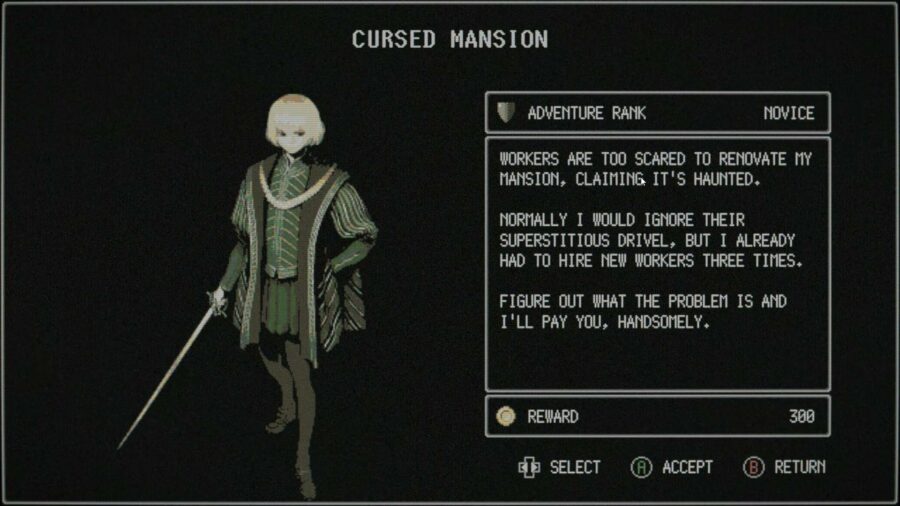
DR2 is set 1,000 years after the events of the original Dragon Ruins, long after all the dragons have disappeared. You play as a group of young adventurers who’re out to find the dragons’ old lairs, and their rumored stashes of untouched treasure. You’ll have to work your way up to making that dragon gold, however, so you start out with a handful of penny-ante mercenary jobs.
DR2 features the same gameplay as DR, but expands its scope. The entirety of the first game took place inside a single wireframe dungeon, while the second features a dozen 3D maps. You’ve also got a number of new ways to customize and improve your characters, such as actual equipment slots, passive abilities, and adjusting the party’s formation.
The start of the game is about as tough as DR2 ever gets. You don’t earn a lot of gold, your characters are made from paper, and everything has an exorbitant price tag. You have to stick with it until you can regularly clear dungeons in a single run, which lets you finally earn enough money to reliably upgrade and level your characters. It’s the same power curve as games like the original Wizardry, but DR2 compresses it into minutes rather than hours.
It does take longer to get rolling than it did in the original DR, primarily because DR2 gives you more to do. If the first game was a sort of idle clicker in dungeon-crawler format, DR2 is an actual dungeon crawler with streamlined mechanics.
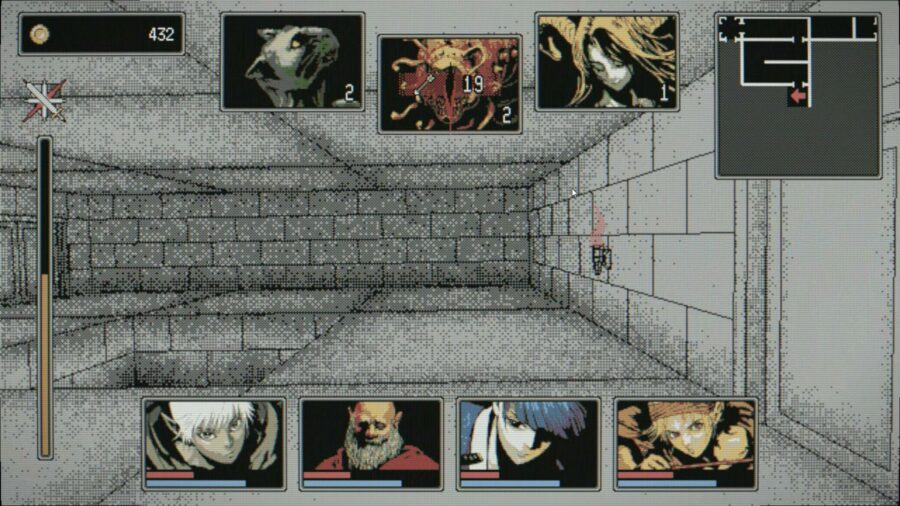
That does lead to what might be its single real problem: you can only really shove so much of a game’s math under the hood before it starts to get unwieldy. DR2 could use some more in-game explanations of what its various stats actually do, so you have some idea of what you could or should be building towards. I get that it’s part of the overall formula, as many of the games DR2 is based on were also made as impenetrable black boxes, but it was just as obnoxious there.
Despite that, DR2 is just as absorbing as the first game was. It’s really leaned into the “cozy” aspect of DR, especially with its soundtrack, which has been stuck in my head for a few days now. Once you’ve got a decent party going, DR2 becomes an excellent pick-up-and-play game. You can put 15 or 20 minutes into it, clear a dungeon, buy some upgrades, and chill out for a while. Granted, that quick vibe check does necessarily involve wholesale demon slaughter, but self-care can take many forms.
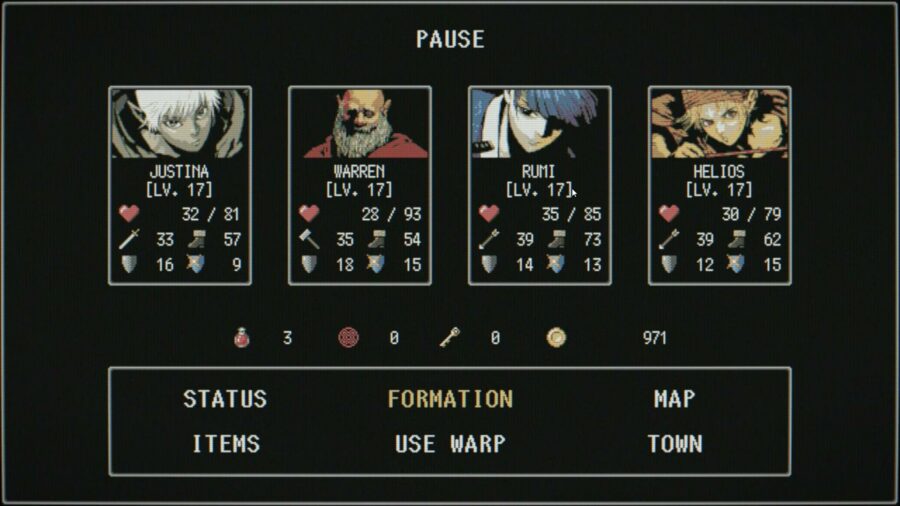
Dragon Ruins 2 is more ambitious than its predecessor, which is both a strength and a slight drawback. It’s still fast and accessible at its core, but it’s added a couple of layers of new systems that can’t help but slow down the process. It’s still more Dragon Ruins, and I’ve had fun with it as an end-of-the-day chill-out game, but it’s lost a step or two as it’s become more complicated. – Thomas Wilde
[Dragon Ruins II, developed and published by Graverobber Foundation, is now available for PC via Steam and GOG for $9.99. This column was written using a Steam copy of the game purchased by Hard Drive.]
—-
Let me make something clear at the outset: I am an absolute lore junkie. I can probably tell you more about the story of the early King of Fighters or Street Fighter games than some of their developers or writers. I really enjoy engaging with the story of a game, especially when that isn’t key to enjoying the actual gameplay. I really admire The Fool’s Apprentice for what it tries to do with its lore and story, even as it fails as a video game.
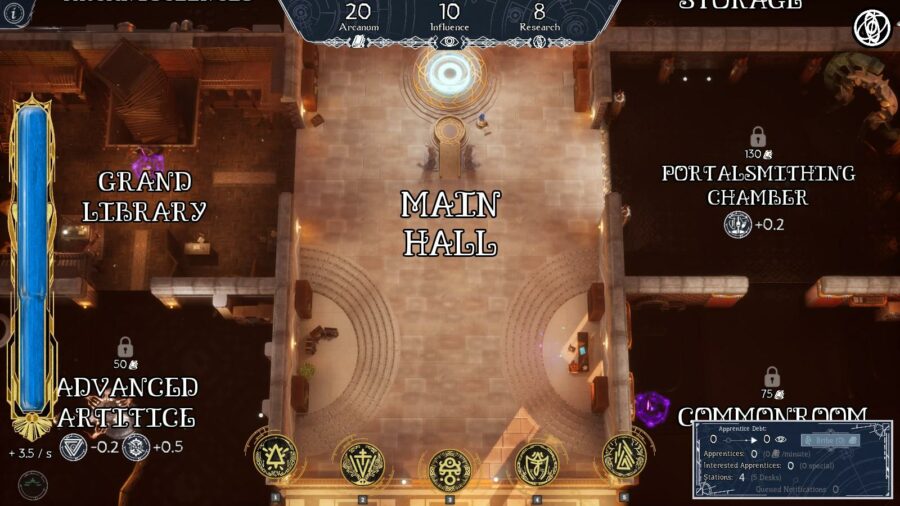
The Fool’s Apprentice is the newest game in the Danse Cosmology World, a fantastical, low-tech setting built around the movements of the stars and the sigils of strange, mystical runes. I’m extrapolating that from the other two games and a novel that are advertised in one of three locations on TFA’s starting screen.
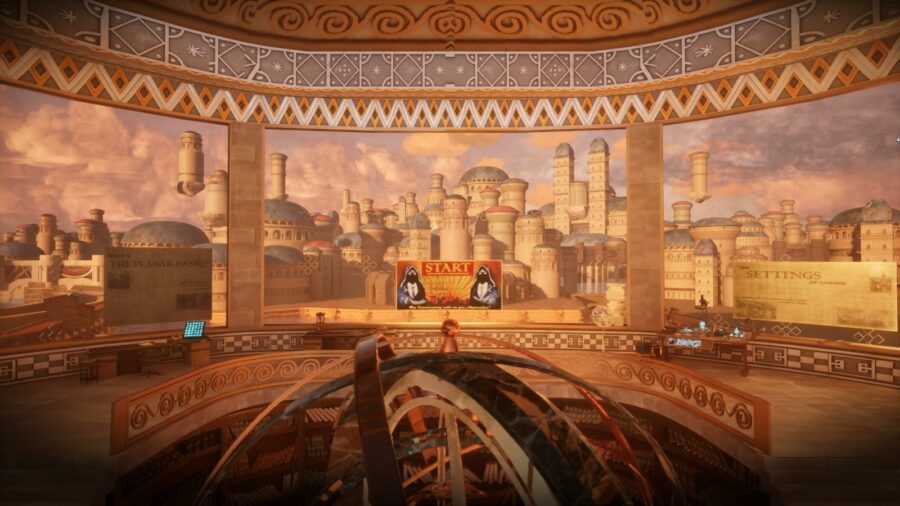
The game makes it clear: you are a presence in the world, despite the Sims-like overhead view and indirect control of your students/apprentices. The cursor is your ‘invisible hand’ that can select objects, as well as interact more directly with 5 different spells: telekinesis, mind-control, alacrity, force field, and disintegration. These are used to interact more directly with students and furniture, and right at the start: more information about them wouldn’t have gone amiss.
Reading runes to access power is an interesting take on where magickal energy comes from in this world, and a lot of thought has been put into the setting and the various mechanics of how and why things are the way they are. However, the part where it needs to be a video game rather than a novel is also the part where it utterly falls to pieces.
Bluntly: there’s no manual save and barely any auto-save feature. In a sim/building game. There are three main resources to be gathered: Arcanum, the main source of exchange for goods and services; Influence, the perception of the surrounding city toward your establishment; and finally Research, the hardest to acquire by far, obtained from exceptional students and goings-on within the walls of the Conservatory. It’s also the only progress that triggers a save. Every other scrap of progress resets between sessions.
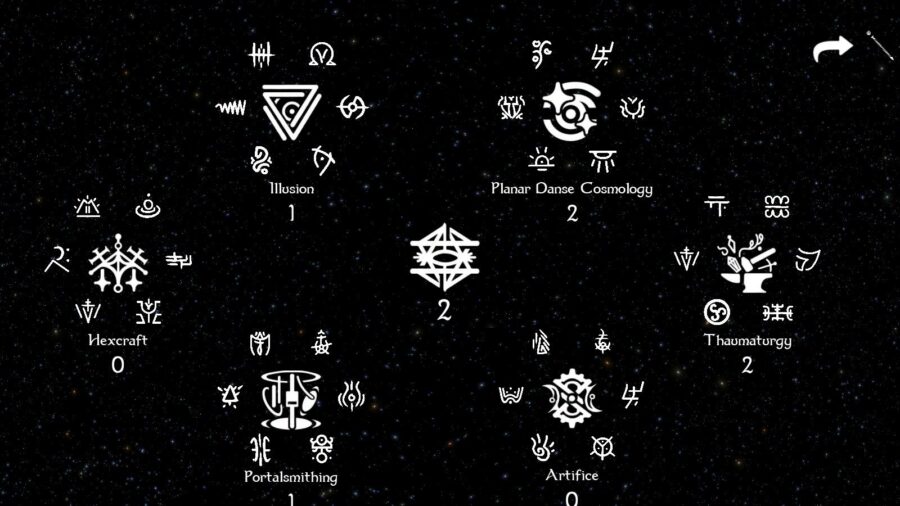
To try and read some semblance of sense into this decision, it feels like the developer wanted the game to have a roguelike element where every “run” was distinct and unique, but even the most brutal roguelikes, except ones that are intentionally channelling the spirit of the original Rogue, will allow some kind of suspended save. This has no such option; every run is only as long as your session, giving the game the sense of a Zen garden’s impermanence. But it’s a plate-spinning magic school sim.
There’s a cleverness to the moment-to-moment writing that feels like it wants to mine humor from the mundanity of the horror of existing in a world where disintegration spells and thieving goblins are the norm. Without a core conceit or anyone to root for, however, the wry irony just comes off as limp, edgy social commentary.
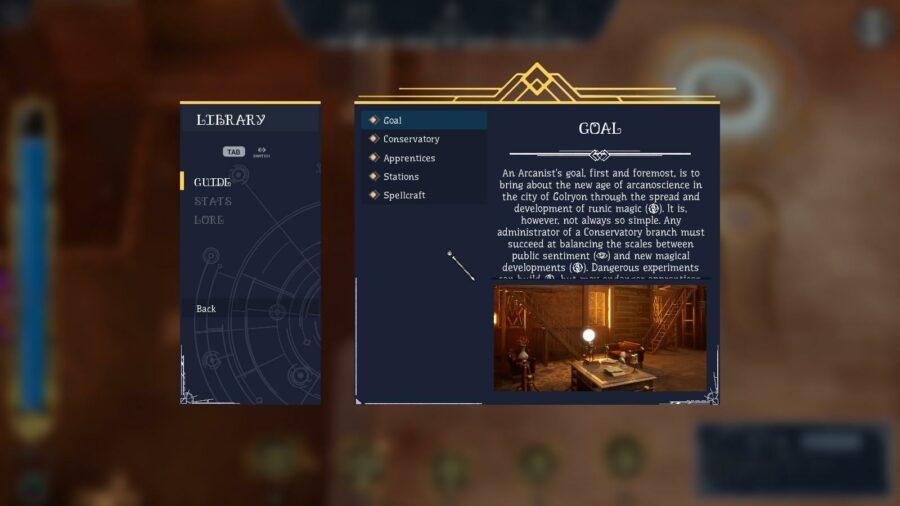
There are the pieces of an interesting game here, and the structure of an interesting world. It may be that if you’ve played the previous two games and read the accompanying novel, this all makes more sense, but this is a crowded field. Other games like The Witcher effectively refer back to external source material without requiring that you engage with them. The story in The Fool’s Apprentice feels like a pamphlet for a larger world rather than anything that could stand alone.
There’s some really good ideas here, but the game needed to be run past testers and casual players. It has the hallmarks of being created in an insular way, similar to how Shenmue developer Yu Suzuki proudly talks about never playing any video games to avoid being influenced by trends. This can lead to obvious pitfalls being overlooked from a lack of experience or knowledge, and that very much feels like what happened here.
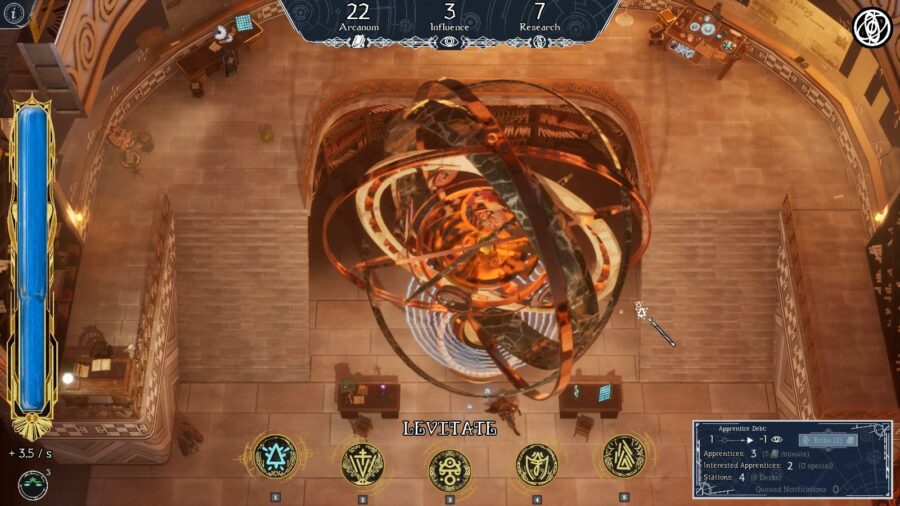
I admire the moxie of someone creating a wholecloth fantasy world and developing multimedia inroads around it; it’s something I think a lot of writers have dreamed of doing. Good ideas, though, often come with severe downsides as they require more support to flourish. The approach here is scattershot: it has plenty of ideas, but none of them are directed. It winds up feeling like an inside joke in a language I don’t speak. – Corey Arder
[The Fool’s Apprentice, developed and published by The Planar Danse, is now available for PC via Steam for $16.99. This column was written using a Steam code sent to Hard Drive by a PR representative for The Planar Danse.]


